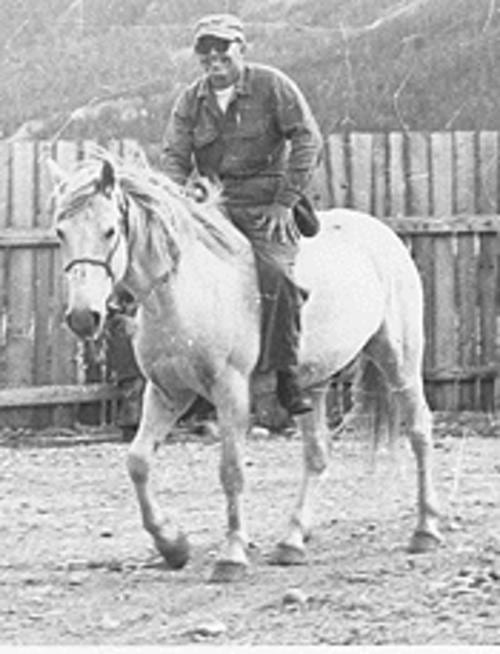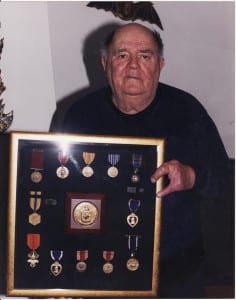Meet the Real Life Captain Kurtz of Apocalypse Now
[dropcap]T[/dropcap]ony Poe (né Anthony Poshepny, [quite probably] the real life Captain Kurtz, died in 2003, of advanced diabetes. Poe helped lead the CIA Hmong army of 30,000 in Laos. His dark humor reflected in the button below refers to the fact that he would pay highland villagers for severed human ears and, later, severed human heads.
 Merchandise marketed by Tony Poe, the real life Captain Kurtz who retired to live in San Francisco. He helped lead the CIA Hmong army of 30,000 in Laos. His dark humor here refers to the fact that he would pay highland villagers for severed human ears and, later, severed human heads.
Merchandise marketed by Tony Poe, the real life Captain Kurtz who retired to live in San Francisco. He helped lead the CIA Hmong army of 30,000 in Laos. His dark humor here refers to the fact that he would pay highland villagers for severed human ears and, later, severed human heads.
During the American War (as the people of Southeast Asia call it), the CIA was highly involved in encouraging Laotian opium production, much as it has now been involved in the cocaine trade in Colombia for decades. With USAID providing rice to Laos during the American War, productive land was freed up for opium production. CIA assets like General Vang Pao and Prince Sopsaisana were able to both make massive profits from heroin and win the loyalty of highland Hmong people by buying their opium at prices above normal market prices. In exchange for buying a village’s opium, which was transported out with U.S. aircraft, General Vang Pao would expect recruits from the village for the CIA’s anti-communist army. In this manner, the Hmong people fought for the CIA and for the Laotian monarchy against the Pathet Lao in a CIA run army directly under the command of Prince Sopsaisana. Prince Sopsaisana was also the head of the Asian Peoples Anti-Communist League.
CLICK ON IMAGES TO ENLARGE



In 1971, Prince Sopsaisana was busted in Paris with $13.5 million of heroin that was destined for New York City. Despite this being the biggest heroin bust in French history, the CIA successfully intervened to secure Prince Sopsaisana’s release and return to Laos.
The revolting duplicity of the US ruling class is seen in the CIA’s longstanding drug operations around the world, coupled with a heavy-handed and highly prudish, disruptive and costly “war on drugs” at home that never ends.
READ MORE ABOUT TONY POE’S REAL BIOGRAPHY. CLICK ON BAR BELOW
[learn_more]
Anthony Alexander Poshepny (September 18, 1924 – June 27, 2003), known as Tony Poe, was a CIA paramilitary officer in what is now called Special Activities Division. He is best remembered for training the United States Secret Army in Laos during the Vietnam War. (As a brainwashed foot soldier at the service of America’s ruling elites, Poe personified the sordid ugliness of gung-ho anticommunism, and the CIA’s role in history as a mirror to the real face of American power.)
Early life and career
Accurate accounting of Poshepny’s career is complicated by government secrecy and by his tendency to embellish stories. For example, he often claimed to be a refugee from Hungary, but was actually born in Long Beach, California (He was of Czech descent). He joined the US Marine Corps in 1942 serving in the 2nd Marine Parachute Battalion and fought in the 5th Marine Division on Iwo Jima,[1] receiving two Purple Hearts. After graduating from San Jose State University in 1950, he joined the CIA and worked in Korea during the Korean War, training refugees for sabotage missions behind enemy lines.
Read more
[/learn_more]
REGULAR ARTICLE RESUMES HERE
CIA leadership of the Hmong army was the inspiration for the creation of the Captain Kurtz character in the movie Apocalypse Now. The real life Captain Kurtz was known as Tony Poe (his real name was Anthony Posepheny). Before leading the Hmong he trained Tibetan counterrevolutionaries fighting for the Dalai Lama at a camp in Colorado, trained Kuomindang counterrevolutionaries for raids into China, and attempted to overthrow the Sukarno government in Indonesia in 1958 (the U.S. later succeeded at this in the 1960s and then proceeded to execute well over a million ill-advisably unarmed pacifistic Communists).
In Laos, Tony Poe would pay money for the murder of Pathet Lao Communists. Similar to the U.S. government buying the scalps of Native Americans in its genocide of those peoples, proof of the murder of Pathet Lao was supplied to Tony Poe through cutting off ears. At one point Tony Poe even stapled a human ear to a report he sent back to HQ as part of trying to answer their skepticism in regards to body counts. When Tony Poe found out that a father desperate for money cut off his own son’s ears to get the bounty, he then decided that he would only pay the bounty if the whole head was brought to him, thus assuring that the victim was dead. Far from the U.S. government sending Martin Sheen to kill Tony Poe, however, he now lives in San Francisco showing off his medals and complaining that he never gets invited to veteran’s meetings. Vang Pao is a wealthy businessman in Fresno California. Like Nazi war criminals, Tony Poe and Vang Pao should have been sent back to Laos and brought to justice.
Steven Argue of the Revolutionary Tendency
APPENDIX
The friends we keep—
The son of a big shot Laotian CIA asset, prominent in the Indochina wars, Prince Sopsaisana, has an interesting page devoted to memories about his father’s drug smuggling activities (besides being a puppet of the CIA and thereby betraying his people but not his class). Monirom Southakakoumar, who apparently makes a living as a designer, is refreshingly candid about the whole thing, perhaps as a matter of expiatory honesty or simply royal blood privilege. If true, his tale, has value as added evidence of the sheer perfidy of the CIA and why this organization so aptly represents the true face of American power. Below, an excerpt from Monirom’s story.
DAD SMUGGLED HEROIN for the CIA
How long do you have to read this post? Seriously, I’m trying to save you some time. If you’re not a reader and you just want something to scan while you drink your coffee skip this post. Or wait until lunch. This is what I meant when I wrote “long-form narrative” in the ABOUT page of this blog. Buckle-up because this one requires commitment.
It is very hard to judge this situation once you realize that my father was not doing this for personal gain but on behalf of the CIA. Does the end justify the means? Also, just because you may not believe this blog entry doesn’t mean it didn’t happen. In retrospect, I’m pretty sure my Dad’s history was one of the possible reasons I didn’t get that design job in ’09 at Langley.
SOURCE I: Political Friendster provides this context:
Air America. That, apparently, was an alternative Richard Nixon was willing to accept.
SOURCE II: Wikipedia has this short five sentence missive:
SOURCE III: A more colorful retelling of the incident from the book, The Politics of Heroin in Southeast Asia by Alfred W. McCoy
The Golden Triangle: Heroin Is Our Most Important Product
(1) For Prince Sopsaisana, or Sopsai as his friends call him, was not just any ambassador; the Americans considered him an outstanding example of a new generation of honest, dynamic national leaders, and it was widely rumored in Vientiane that Sopsai was destined for high office some day.
(4) its probable destination. Tipped by an unidentified source in Vientiane, French officials had been waiting at the airport. Rather than create a major diplomatic scandal by confronting Sopsai with the heroin in the VIP lounge, French officials quietly impounded the suitcase until the government could decide how to deal with the matter.
(6) Perhaps these embarrassing facts may explain the U.S. Embassy’s lack of action. In spite of its amusing aspects, the Sopsaisana affair provides sobering evidence of Southeast Asia’s growing importance in the international heroin trade. In addition to growing over a thousand tons of raw opium annually (about 70 percent of the world’s total illicit opium. (7) Southeast Asia’s Golden Triangle region has become a mass producer of high-grade no. 4 heroin for the American market. Its mushrooming heroin laboratories now rival Marseille and Hong Kong in the quantity and quality of their heroin production.
READ MORE HERE
What is $1 a month to support one of the greatest publications on the Left?
